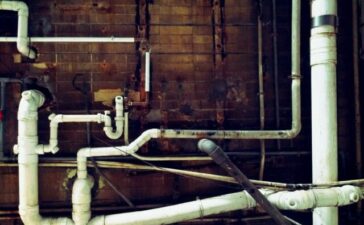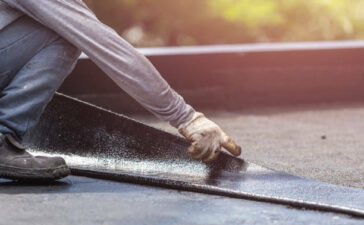Water damage can be very devastating and it doesn’t matter if it was caused by leaking devices, broken pipes, or sewer backups; it is simply devastating. It can cause damage not only to your home but also to the properties within your home.
Furthermore, when it is left unchecked, it can lead to mold development, structural problems, and safety hazards of different types. Visit https://lightningwaterdamage.com to learn more about the things that could happen if water damage is not dealt with immediately.
Therefore, in this article, we will guide you on how to deal with water damage in your home if you stay in Tampa, Florida, or anywhere in the world.
Let’s begin, shall we?
Stop the Source of the Leak
Water damage is usually a result of a leak somewhere. Therefore, the first step is to locate the leak source and stop it.
Do bear in mind that depending on the nature of the leak, you might have to call in professionals to carry out this step. For example, you may not be able to fully stop sewer backup; hence, the services of qualified professionals will be needed in such a case.
Notify your Insurance Company
Once you have stopped the leak, you need to inform your insurance company of the tragedy that has occurred. What happens next depends on your insurance policy and package. For instance, some policies do not cover water or flood damage.
What is constant though is that an adjuster will be sent from the company to assess the nature and extend of the damage. In doing so, they will determine whether it can be regarded as a covered loss.
To help ensure that you get your insurance, you should make as much documentation of the whole ordeal as possible. We recommend that you take a lot of pictures before the damage occurred; during the occurrence, and after you have cleaned up your home.
Maintain Safety Precautions
You need to stay safe during the process. If you have a family, you will need to keep them safe as well. Hence, you need to maintain these safety precautions:
1. Turn the Power Off
Electricity is not a pal of water; therefore, you don’t want the power turned on in your home when water damage occurs. Don’t just leave it on and try to avoid being in wet places. You might not be able to truly assess the extent or where the liquid has reached.
If you need to enter a wet area before you can turn off the power, then we recommend you call in the services of an electrician.
2. Use Protective Clothing
Bacteria can be in the water. There is also a higher possibility of injuries when such an incident occurs. Therefore, you should protect yourself using protective gear such as rubber gloves and boots.
3. Protect your Valuable Properties
Wood furniture, rugs, etc. can be lifted off the floor to prevent them from getting damaged. Anything that you consider valuable should be removed and kept safe from any form of liquid.
Begin Water Damage Restoration Immediately
You don’t need to delay in beginning the restoration process. Once you are cleared to go back into your home; that is after the water has been removed, then the restoration should begin after a day or two. It should not exceed 48 hours.
In the case whereby the destruction is severe for you or your family to handle alone, then you need to employ the aid of restoration services. They will be able to handle the issue far better than you can.
If it is something you can handle, ensure that you use protective clothing. Keep what you can salvage and dispose of anything that can’t be salvaged. Do not keep a damaged item no matter the sentimental value you have attached to it.
While carrying out repairs, the flooring, insulation, and drywall might have to be removed depending on how the water affected your home. Doing this will ensure that mildew and mold do not spread in your house. Click here to check out some basic facts about mold and dampness. Drying, cleaning, or disposing of furniture are the options available subject to the extent of the destruction.
Dry Your Home
Immediately the water is completely removed, then you need to dry your home as it will still be quite damp. This is especially true if you reside in very humid regions.
You can get rid of the humidity using your central air conditioning if your power is back on. Dehumidifiers and air movers can also be used.
Do your best to ensure that mold and mildew do not set in. Therefore, you need to get your home dry within 3 to 4 days.
Look for Mold and Mildew
You might have noticed that we have talked about mold and mildew at several places in this article. It is important that you make out time to learn more about the health risk of having mold in your home. The reason is that apart from water damage, they can be the most annoying thing you might have to deal with.
Therefore, we recommend that you check if mold has built up in your home. If it has then you need to employ professionals who will help you get rid of it.
Begin Repairs
The flood might have damaged certain parts of your home. At this point, you need to begin to work on repairing the areas that have been destroyed. This is the stage that might take the longest time, but you should take it slowly as possible to ensure you get the best.
You might have to repair or even replace the flooring and wall. If that is the case, employ the help of building engineers: Not everything should be a DIY.
Start Living in your Home
You will need permission from the following before you can move back in:
- Insurance company
- Construction company
- Local government if it was a natural disaster
Conclusion
Dealing with water damage can be somewhat overwhelming. Nevertheless, it is something that needs to be done immediately it occurs. With the guide above, we believe you know what to do if you run into such a situation.






